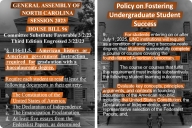You have /5 articles left.
Sign up for a free account or log in.

MCCAIG/Getty Images Signature
In November, non-tenure-track faculty at Loyola Marymount University in Los Angles went public with their organizing drive, hoping to join the ranks of unionized faculty at colleges and universities across the country, including fellow Jesuit institutions Fordham and Santa Clara Universities. There is a crisis in U.S. higher education, one to which Roman Catholic institutions are not immune: an often-crippling tuition rate is coupled with an increasingly precarious and impoverished professoriate. I can speak to this: I am not only a tenured professor at LMU, where I have taught for more than 17 years, but I am also the parent of an LMU sophomore.
My decade-long engagement with my non-tenure-track colleagues’ struggle was kick-started through individual relationships. Some blossomed into friendships, and these awakened me to the reality that my own professorial privileges come too often at the cost of my colleagues’ exploitation. Across the country, non-tenure-track faculty make up about 71 percent of the professoriate. They are the majority presence on my campus and lack the most basic working conditions and job security that are meant to support the flourishing of teaching and which tenure-line faculty tend to take for granted.
As a tenured professor, I have one of the most secure jobs in America. In contrast, many of my non-tenure-track colleagues receive one-semester contracts—even those who have taught at my institution for decades. As I write, I have in mind a particular professor (and committed union organizer) whose classes have been attracting students for more than 20 years. His one-semester-at-a-time contract is the result of (an easily remedied) lack of planning, and it is born of blithe disregard for the financial hardship and psychological terror it induces: old-timers at this gig still get the jitters when once again it comes time to sign the yearly lease on the apartment and the university still hasn’t confirmed this semester’s contract. Other colleagues are simply “disappeared.” When a department chair recently dispatched a non-tenure-track faculty member for what frankly seemed to be personal reasons and rejected a reasoned reconsideration, my colleague had no means of appeal. Non-tenure-track faculty concede that their precarious working conditions undermine rigorous and creative teaching; they know that faculty whom students regard as too challenging or who teach topics or texts not immediately to students’ taste are apt to receive lower student evaluations, often the only criterion used to determine retention.
The instability of the professoriate has additional implications for our students. Seven out of the eight courses my daughter took during her freshman year at LMU were taught by faculty off the tenure track. My daughter hoped to study with some of them again; more than one has already vanished. At the end of last semester, the faculty member who fueled my daughter’s love of literature confessed she had yet to learn if she would get an offer to return when students asked about taking more courses with her.
“Will my favorite professor be back next semester?” is a question on the minds of many of our students, who plead for constancy in their contact with their faculty. And since most of our faculty members are contracted exclusively to teach, if they respond to students’ requests for outside-the-classroom mentoring and advising, they do so as part of an engorged volunteer corps, often at considerable personal cost. As a colleague recently reminded me, he is one of many “freeway fliers.” When he’s teaching sometimes half a dozen classes at multiple campuses each semester to meet the rent and pay for groceries, becoming integrated into a campus community is an impossibility for him. To those who interject, “If they don’t like it, they should get another job,” I say this is the majority teaching faculty on which our institutions depend; we replace them as quickly as they leave, a reality of today’s here-today-gone-tomorrow academic labor market.
Given the generally agreed-upon value of a college degree for achieving economic security and mobility, it’s hard not to see the irony that so many of our colleges and universities are sustained by an underclass of hypereducated but tenuously employed professors. One colleague calculates that, adjusted for inflation, he makes less in 2023 than he made almost two decades ago when he first began teaching full-time at LMU. The salary of a colleague in the department in which I teach is $39,000 less than mine, although this colleague has taught here several years longer than I have, teaches more classes each semester than I do, has published several books to my one and does a commensurate amount of service.
I know all this because we trade confidences. Like management everywhere, ours counts on us hiding our salaries from one another, and some of us have been reprimanded for breaking the silence that shores up the economic inequity on which the economy of today’s higher ed is predicated. While tenure-track faculty members are eligible for a university housing loan, rental assistance and off-campus housing, non-tenure-track faculty are not, further increasing our income inequality in one of the most expensive housing markets in the country. And while the call for diversity, equity and inclusion has assumed a central place in higher ed branding, and women and men of color have gained numbers unsurpassed in the history of the professoriate, structural support for the scholarly enterprise is eroding at a dramatic rate as the corporate model of higher ed tightens its grip. The truth is that few who are not financially independent or who can depend on a partner will have the luxury of teaching off the tenure track at my institution, a reality disproportionately affecting racial and ethnic minorities.
My university calls attention to our faculty as “teacher-scholars,” a significant selling point of our Jesuit education, and tenure-track faculty members may apply for internal grants for research, a prerogative not uniformly offered to non-tenure-track faculty, many of whom mourn the loss of a life of scholarship that first summoned them into higher education and that is supposed to nourish their teaching. Exacerbating the bifurcation between tenure-line and non-tenure-track faculty are a host of matters that have minimal or no budgetary implications: my non-tenure-track colleagues have no guarantee of academic freedom, and in a time of pressing need for intellectual openness, many self-censor, led by fear of reprisal that is activated as easily as non-reappointment. Unlike tenure-line faculty, they receive minimal pedagogical support and have little say in the courses they teach.
LMU’s non-tenure-track faculty are continuing to press for their integration into university governance structures, sometimes with success—the prestigious Delphi Award was recently conferred on LMU on this account. Although the administration took advantage of this achievement to pat itself on the back, the reality is that virtually every instance of non-tenure-track faculty becoming part of the dominant faculty culture and institutional structures has been hard-won, often over the course of many years’ struggle and with fierce opposition, not only from LMU’s administration but also from faculty on the tenure track. (Administrative concession is frequently accompanied by self-celebration and savvy PR spin.)
Yet it is in the institution’s interest to involve non-tenure-track faculty in the decision-making structures and processes that help to determine how and what we teach; failure to do so results in a stifling of the pedagogical creativity the best institutions champion. I have a colleague who for several years taught writing workshops at the California Institute for Women, where she also worked on the prison’s in-house newspaper. My colleague imagined freshman composition and journalism courses that would link students at our LMU campus with those at the CIW in a collaborative effort—exactly the sort of venture to which the Jesuit Prison Education Network has recently called its 28 affiliate colleges and universities. But my colleague’s off-the-track status meant she did not have the leverage to put any of her ideas into play, one of numerous failures to draw on the contributions of non-tenure-track faculty and, in this case, a regrettable loss for our university, with its stated commitment to the integration of learning and service for the benefit of students and society.
At my Jesuit university, where we celebrate a commitment to cura personalis (personalized attention to our campus community), many tenure-track faculty know little about their colleagues off the track, evidence of a lack of the kind of curiosity and imagination that our own core curriculum hopes to cultivate in our students. Our mission of social justice, which we are urged to incorporate into our teaching, rejects the call that sounds too close to home. Up close, the eye of the heart contracts, and solidarity buckles.
Ours is a campus culture that bypasses the dialogue and “encounter with the other” that is otherwise prized in our Jesuit context. After all, it can be hard to pitch in to dismantle structures from which one benefits, and as Princeton University sociologist Matthew Desmond has thrown into relief, inequity thrives not only on account of powerful institutions and systems but also from the accumulation of the many large and small decisions individuals make to hoard their resources and to sequester their privileges. Tenure-track faculty feed one another’s fantasy that merit alone landed them their positions, a fantasy created by our need to justify our privilege, and which, through the undergoing of what Desmond calls “degradation rituals” many non-tenure-track faculty have, sad to say, internalized.
On board with a common workplace tactic, our administration sets employees against each other, and when they strategically recall to us that resources are finite, we tenure-track faculty understand the threat: sharing with them means less for us, the academic marketplace as a zero-sum game. (There is no admission of upper-administrative bloat, in staffing numbers or salaries.)
Or, to put it another way, our administration relies on the elite members of the two-class faculty structure to keep the majority in check. If we tenure-line faculty feel vulnerable in the face of our colleagues’ call for better compensation and working conditions, this may be because we recognize ourselves as benefiting from the intellectual, psychological and financial harm to which we contribute. If we acknowledge we are part of the problem, maybe we can become part of the solution.
“We are pro-employee, not anti-union,” our provost wrote in a letter to faculty after the non-tenure-track faculty organizers went public, to which a colleague responded with a full-throated guffaw, and I asked myself for the thousandth time how I would sustain the kind of job insecurity my colleagues endure—and do my job well. If solidarity doesn’t move us to join arms with our colleagues, perhaps, I thought, self-interest will eventually kick in. All of us in higher ed know that tenure is eroding rapidly, and the entirety of the professoriate may soon be entirely disposable, one more casualty of our throwaway society. The provost’s letter closed with the claim that “providing the best educational experience for our students drives our decision-making.”
At the heart of the union movement at my university is a cri de coeur that challenges this claim. The key, perhaps, to transforming our institutions’ orientations and structures is to admit that non-tenure-track faculty members’ cries for equity are simultaneously a plea on behalf of our students. All of us involved in higher ed, including students and their families, need to consider whether being pro-union may be our best bet at being pro-student.







.jpg?itok=YusUVfky)
